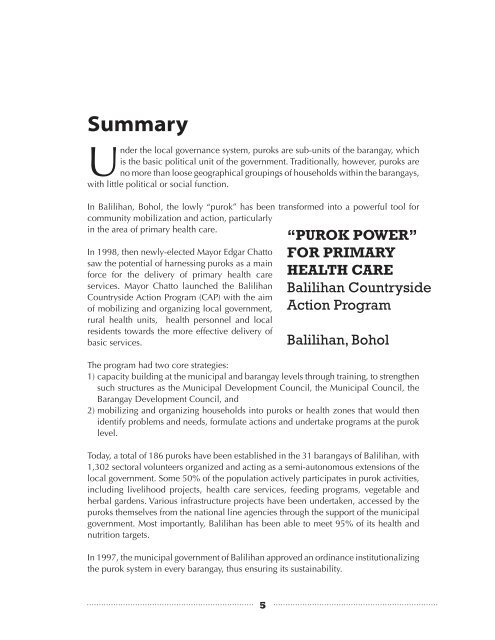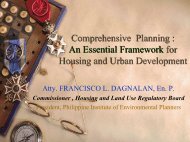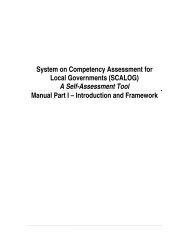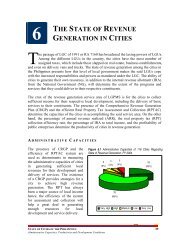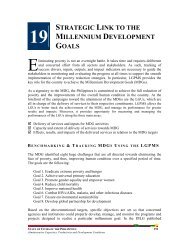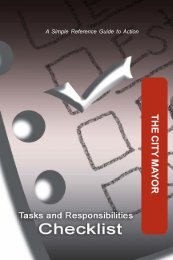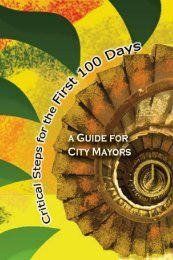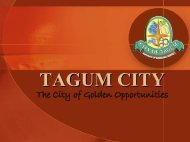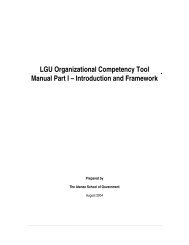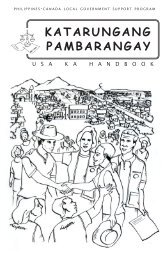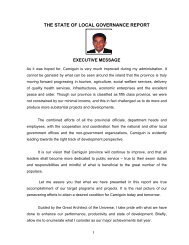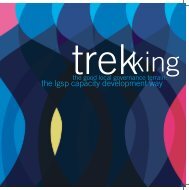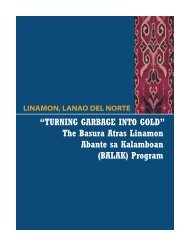Create successful ePaper yourself
Turn your PDF publications into a flip-book with our unique Google optimized e-Paper software.
Summary<br />
Under the local governance system, puroks are sub-units of the barangay, which<br />
is the basic political unit of the government. Traditionally, however, puroks are<br />
no more than loose geographical groupings of households within the barangays,<br />
with little political or social function.<br />
In <strong>Balilihan</strong>, Bohol, the lowly “purok” has been transformed into a powerful tool for<br />
community mobilization and action, particularly<br />
in the area of primary health care.<br />
In 1998, then newly-elected Mayor Edgar Chatto<br />
saw the potential of harnessing puroks as a main<br />
force for the delivery of primary health care<br />
services. Mayor Chatto launched the <strong>Balilihan</strong><br />
Countryside Action Program (CAP) with the aim<br />
of mobilizing and organizing local government,<br />
rural health units, health personnel and local<br />
residents towards the more effective delivery of<br />
basic services.<br />
“PUROK POWER”<br />
FOR PRIMARY<br />
HEALTH CARE<br />
<strong>Balilihan</strong> Countryside<br />
Action Program<br />
<strong>Balilihan</strong>, Bohol<br />
The program had two core strategies:<br />
1) capacity building at the municipal and barangay levels through training, to strengthen<br />
such structures as the Municipal Development Council, the Municipal Council, the<br />
Barangay Development Council, and<br />
2) mobilizing and organizing households into puroks or health zones that would then<br />
identify problems and needs, formulate actions and undertake programs at the purok<br />
level.<br />
Today, a total of 186 puroks have been established in the 31 barangays of <strong>Balilihan</strong>, with<br />
1,302 sectoral volunteers organized and acting as a semi-autonomous extensions of the<br />
local government. Some 50% of the population actively participates in purok activities,<br />
including livelihood projects, health care services, feeding programs, vegetable and<br />
herbal gardens. Various infrastructure projects have been undertaken, accessed by the<br />
puroks themselves from the national line agencies through the support of the municipal<br />
government. Most importantly, <strong>Balilihan</strong> has been able to meet 95% of its health and<br />
nutrition targets.<br />
In 1997, the municipal government of <strong>Balilihan</strong> approved an ordinance institutionalizing<br />
the purok system in every barangay, thus ensuring its sustainability.<br />
5


